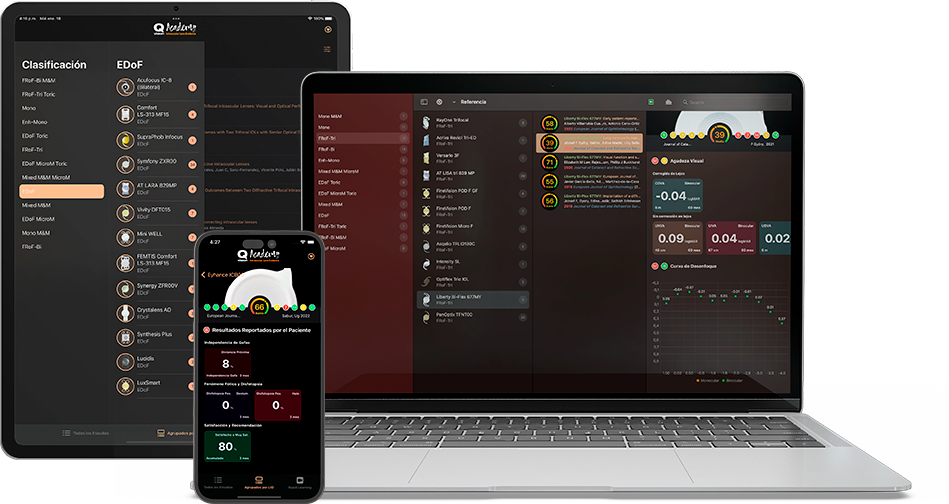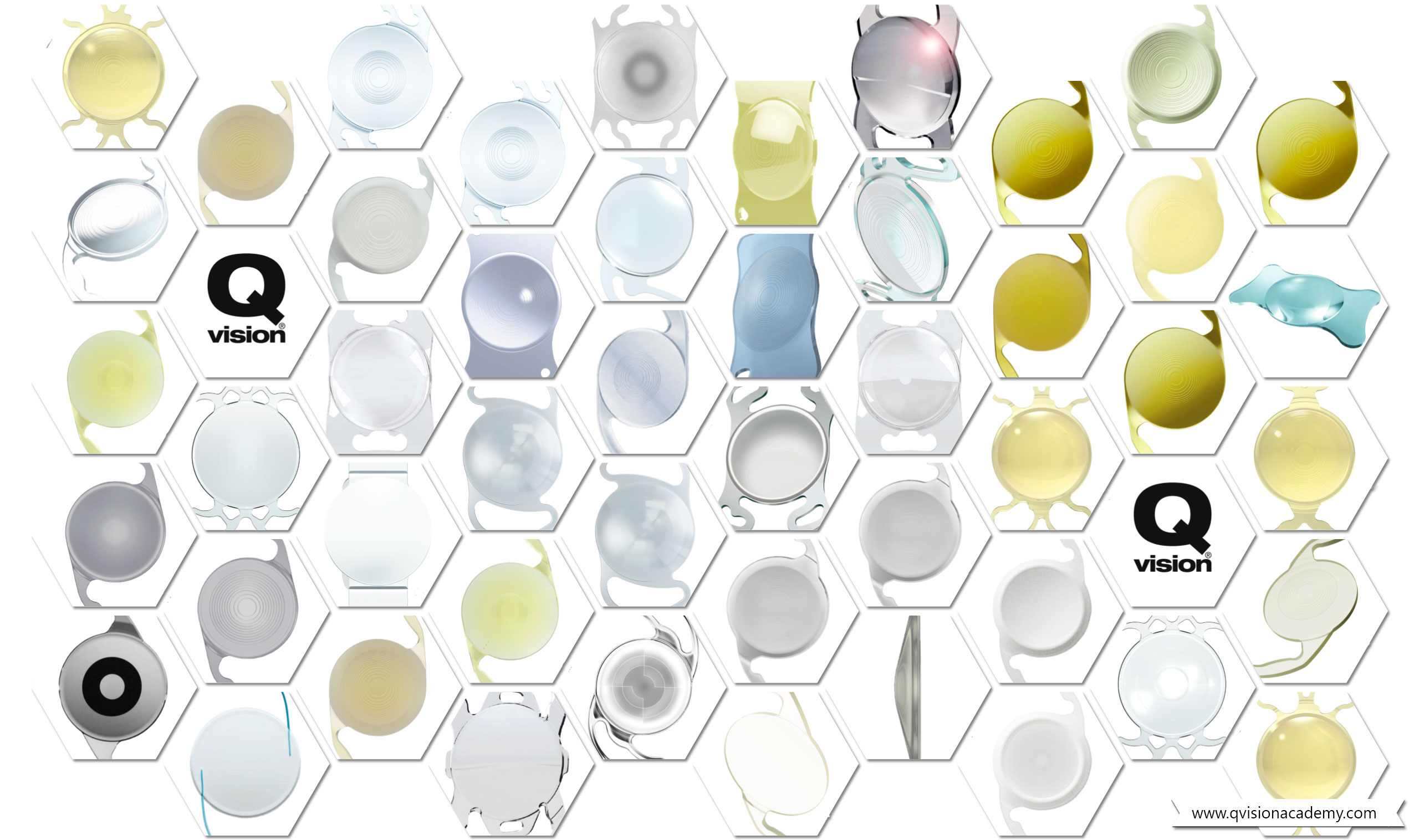Use License Agreement
1. PURPOSE OF THE AGREEMENT
This use license agreement represents a pact between you (the USER) and INDALOFTAL SL (the DEVELOPER), located at Camino de Bobar, 1, 04007 Almería, Spain (Tax ID No. B04570446). This license allows the use of IOLEvidence according to the rules established herein, including restrictions on copying, modifying, or redistributing the application. IOLEvidence is an App for disseminating knowledge about intraocular lenses. Specifications and functionalities are detailed in the Apple App Store.
2. SCOPE OF THE USE LICENSE
The DEVELOPER grants the USER a non-exclusive, personal, and non-transferable right to use IOLEvidence. These terms imply that the license is individual, cannot be shared or transferred, and may be granted similarly to other users by the DEVELOPER.
The USER may use the application on any of their devices that use the same Apple Store account. The DEVELOPER owns all intellectual and commercial property rights of the application. Therefore, the USER does not obtain any rights over it beyond use. Specifically, it is not permitted to replicate, enhance, update, create successive versions, adapt, or modify IOLEvidence by reverse engineering, unauthorized distribution, etc.
3. COST AND SUBSCRIPTION MODALITIES
IOLEvidence can be used for free, but certain functionalities are subject to a paid subscription. The prices of the various subscription modalities are detailed in the Apple App Store. IOLEvidence offers an automatically renewable annual subscription ("PRO"). The subscription allows access and use of the services for one year from the payment of the subscription. The payment will be charged to the USER's Apple Store account after purchase confirmation. It is the USER's responsibility to deactivate their subscription at least 24 24 hours before the end of the current period if they do not wish to renew the subscription. The way of notifying the USER before the automatic renewal of the subscription is carried out under the terms of service of the Apple Store.
The DEVELOPER uses Apple Store services to manage the USER's subscription. The management of subscriptions, including cancellations and refunds, is carried out through the Apple Store, under its terms of service.
The DEVELOPER commits to ensuring that the application is as useful and efficient as possible. For that reason, we reserve the right to make changes to the application or charge for its services, at any time and for any reason. We will never charge you for the app or its services without making it very clear exactly what you are paying for. The scope of the services may depend on the subscription you have. The developer may change, update, suspend, improve, or discontinue aspects of the services.
4.- OBLIGATIONS OF THE PARTIES
4.1.- The DEVELOPER shall comply with the following obligations:
- The DEVELOPER commits to making IOLEvidence an educational tool and support in the constant updating of its users, promoting accuracy and depth in the understanding of topics related to intraocular lenses.
- The DEVELOPER commits to ensuring the operation of IOLEvidence in accordance with the functionalities published in the Apple App Store. And to support the USER by resolving any reported issues in the next scheduled update of the App, if any. The DEVELOPER strives to resolve issues in scheduled updates, although it cannot commit to a specific timeframe due to the variability of circumstances.
- The DEVELOPER will take reasonable steps to mitigate technical incidents related to third-party dependent services, although cannot guarantee their complete resolution.
- At some point, the DEVELOPER may wish to update the application. The application is currently available on iOS and MacOS: system requirements may change, and you may need to download updates if you want to continue using the application.
- Although the DEVELOPER will do everything possible to update the application to the latest versions of IOS or MacOS, they cannot guarantee previous functionalities in future versions of the App. Similarly, they cannot guarantee that these updates will be compatible with previous versions of IOS or MacOS, nor that the functionalities between different operating systems will be equivalent.
4.2.- Obligations of the USER
- Given the volume of information handled, it is understandable that occasionally there may be errors made during the process of data extraction or during the search for information by artificial intelligence systems (identified as GPT Experts in the App). It is the responsibility of the IOLEvidence USER to verify the reliability and accuracy of the information provided, by consulting the original sources cited within the application. This recommendation is particularly imperative in cases where the information from IOLEvidence is used in conjunction with artificial intelligence tools or advanced query systems.
- It is the responsibility of the USER to keep their device and access to the application properly protected. Therefore, we recommend not to jailbreak or hack your device, which is the process of removing the software restrictions and limitations imposed by the official operating system of your device. It could make your device vulnerable to malware/viruses/malicious programs, compromise the security features of your device, and could mean that the application stops working correctly. It is important to understand that jailbreaking or hacking your device can have adverse legal consequences, including loss of warranty and possible violations of the law.
- The USER must be aware that there are certain things for which the DEVELOPER cannot be held responsible. Certain functions of the application will require that the application have an active Internet connection. The connection can be Wi-Fi, or provided by the USER's mobile network provider, but the DEVELOPER cannot take responsibility for the application not functioning fully if it does not have access to Wi-Fi or a data service.
- If the USER is using the application outside of a Wi-Fi area, they should remember that their terms of agreement with their mobile network provider will still apply. As a result, the USER's mobile service provider may charge them for the cost of data during the connection while accessing the application or other third-party charges. By using the application, the USER accepts responsibility for such charges, including roaming data charges if they use the application outside of their home territory (i.e., region or country) without disabling data roaming. If the USER is not the bill payer of the device on which they are using the application, it should be noted that we assume the USER has received permission from the bill payer to use the application.
- In the same vein, the DEVELOPER cannot always take responsibility for the way in which the USER uses the application, for example, they must ensure that their device remains charged; if it runs out of battery and cannot turn on the device to take advantage of the Service, the DEVELOPER cannot accept responsibility.
- The USER is free to update the application when offered and understands that to update the App it may be necessary to update the operating system of their device. Similarly, they understand that the operation of the App may be affected if they use versions of the operating system not optimized for the version of the App that is installed. If a user decides not to update the application, the DEVELOPER cannot guarantee proper operation or access to certain functionalities.
- The USER commits to making appropriate use of the App, especially with respect to not infringing the intellectual property rights of the same and to using the services appropriately, for example, not infringing privacy policies by including personal data in any of the services offered in the App.
5.- DEVELOPER'S LIABILITY
5.1.- Exclusions of Liability
- Third-Party Dependence: Regarding the DEVELOPER's responsibility for the use of the application, when using it, it is important to note that although we strive to ensure that it is up-to-date and correct at all times, we rely on third parties to provide us with information so that we can make it available to you. The DEVELOPER accepts no liability for any loss, direct or indirect, that you experience as a result of fully relying on functionalities provided by third parties.
- Health Decisions Based on Application Information: The DEVELOPER assumes no legal responsibility for health decisions based on IOLEvidence information. All medical decisions should be made by qualified professionals. IOLEvidence is a support tool and does not replace professional medical advice. The IOLEvidence application IS NOT A MEDICAL DEVICE, it is designed to facilitate access to specialized and updated knowledge, and is distinguished for NOT employing algorithms for medical decision-making or diagnostics. Instead, IOLEvidence acts as a means for the dissemination of scientific information, with the purpose of enriching understanding and supporting access to information for its USERS, who may include health professionals, researchers, and students.
- Limited Warranty of Operation: The DEVELOPER only guarantees the fulfillment of the functionalities and technical specifications of IOLEvidence as advertised. In the event of any non-compliance with these terms and conditions by the DEVELOPER, they will only be liable for a maximum refund amount corresponding to the price paid by the USER for the licensing contract. The USER will use the Apple Store service to request such a refund amount, who will act as a mediator.
- System Failures and Maintenance: The DEVELOPER will not be responsible for interruptions or failures in the operation of IOLEvidence due to scheduled maintenance, updates, technical emergencies, or failures in telecommunications networks beyond their control.
- Improper Use by the User: No liability is assumed for damages or losses caused by improper use of the application by the user, including, but not limited to, unauthorized manipulation, jailbreak, or modification of the device.
- Force Majeure Events: The DEVELOPER is exempt from liability in situations of force majeure, such as natural disasters, armed conflicts, strikes, and other unforeseen and unavoidable events that prevent the fulfillment of their obligations.
5.2.- Maintenance and Availability
- Regular Updates: The DEVELOPER commits to performing regular updates to ensure the proper functioning and security of the application. However, they cannot guarantee that older versions of the application will be compatible with future updates.
- Operational Guarantee: Although the DEVELOPER strives to ensure that IOLEvidence is available without interruptions, they cannot guarantee uninterrupted or error-free availability, due to the nature of the Internet and digital technologies.
6.- PRIVACY POLICY
All data collection, processing, and storage practices are designed to comply with the General Data Protection Regulation (GDPR) and other applicable data protection laws.
The terms of the Privacy Policy published in the App Store or within the App in the Privacy Policy section apply to this license agreement.
The DEVELOPER commits to not collecting personal data from the user through IOLEvidence, ensuring their privacy and confidentiality in accordance with current regulations.
The DEVELOPER uses the following third-party services that may process anonymized user data: 1) Analytics services on how users use IOLEvidence, which allows us to detect and identify improvements to be made in the App. For this, we use TelemetryDeck. 2) Messaging services that allow us to alert users who enable notifications about the contents of IOLEvidence. For this, we use "Firebase Cloud Messaging". 3) Services for searching scientific literature through generative artificial intelligence. For this, we use GPT-Trainer. For detailed information about these third-party services, please review the privacy policy within the App.
7.- CHANGES TO THESE TERMS AND CONDITIONS
The DEVELOPER may update these Terms and Conditions. Therefore, it is recommended that the USER periodically review this page for changes as the DEVELOPER does not have any other means of notification as they do not store personal data of their USERS. The DEVELOPER will notify you of any changes by posting the new Terms and Conditions on this page. These changes are effective immediately after they are posted on this page. Significant changes include, but are not limited to, alterations in the privacy policy, adjustments in user obligations, and modifications in subscription conditions.
8.- TERMINATION
This agreement will be terminated due to the general causes established in Spanish and European legislation and, in particular, for the following reasons:
Upon the expiry of its duration as contemplated in the type of subscription chosen by the USER.
For non-compliance with the Terms and Conditions by the DEVELOPER, the USER may request a refund through the Apple Store, the DEVELOPER not being responsible for providing assistance to the USER in this process. Nor for making the refund decision that may depend on the conditions of use of the Apple Store.
9.- RESOLUTION OF INQUIRIES AND QUESTIONS
If the USER has any doubts or inquiries regarding the terms of this license agreement, they can contact us by sending an email to [email protected]. The DEVELOPER will respond to your inquiries within 72 hours.
10.- APPLICABLE LAW AND JURISDICTION
Before resorting to the courts, the parties will attempt to resolve any dispute through mediation. In case of not reaching an agreement, the parties will submit to the Courts of Vitoria, according to Spanish legislation. For any discussion or controversy about the interpretation or compliance with this contract, the parties expressly agree to submit to the Courts of Vitoria (Álava) in Spain, expressly waiving their own jurisdiction if they have one, unless Spanish procedural law establishes a different one.
In any case, in accordance with the provisions of Regulation (EU) No. 524/2013 of the European Parliament and of the Council, of May 21, 2013, on the resolution of online consumer disputes and amending Regulation (EC) No. 2006/2004 and Directive 2009/22/EC, we provide the following electronic link to the platform for out-of-court resolution of online disputes: https://ec.europa.eu/consumers/odr/main/index.cfm?event=main.home.chooseLanguage.
11.- PREVALENCE OF THE ORIGINAL TEXT
This document may be a translation of the original License Agreement, which has been drafted in Spanish. Although efforts have been made to ensure the accuracy of this translation, in case of any conflict, ambiguity, or discrepancy in interpretation between this version and the original Spanish version, the Spanish text will always prevail. The original version in Spanish can be found at "https://www.qvisionacademy.com/pages/iolevidence" and is considered the official and binding version of the License Agreement. This translation is provided solely for informational and convenience purposes for users who do not speak Spanish.
By accepting these terms and conditions, the USER acknowledges and agrees that they have had the opportunity to review both the Spanish version and this translation, and that their acceptance is based on their understanding of the License Agreement in the original Spanish version.


